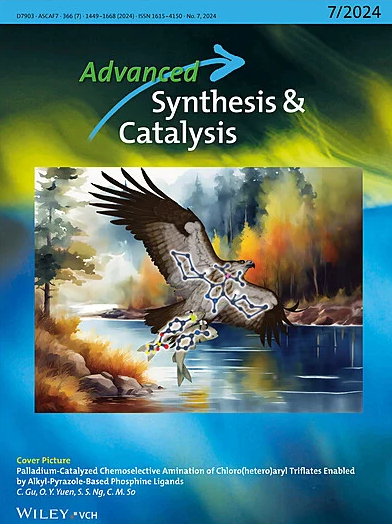Skeletal Editing of 6-(Hetero)arenes via Single-Carbon-Atom Insertion
IF 4.4
2区 化学
Q2 CHEMISTRY, APPLIED
引用次数: 0
Abstract
The skeleton editing strategy has emerged as a transformative approach in drug discovery and agrochemical innovation, enabling precise modifications through the insertion, elimination, or substitution of specific atoms within the core carbon or heterocyclic frameworks of molecules. Recent advancements in carbene chemistry have led to significant breakthroughs in single-carbon-atom insertion reactions, particularly in the context of five-membered carbon and heterocyclic systems. However, the application of this strategy to six-membered arenes and heteroarenes has faced considerable challenges, largely due to the thermodynamic and kinetic barriers associated with disrupting the inherent aromaticity of these systems and driving their conversion to seven-membered rings. In recent years, the development of novel catalytic paradigms, including photo- and electro-catalytic methods, has catalyzed groundbreaking progress in this area. Notably, the design and implementation of asymmetric skeletal editing systems for arenes have significantly expanded the scope and versatility of this methodology, offering new avenues for the rational manipulation of molecular architectures. This review aims to offer a detailed summary and analysis of recent progress in skeletal editing reactions associated with single-carbon-atom insertion and outlining the future potential applications of this technology.通过单碳原子插入对6-(杂)芳烃进行骨架编辑
骨架编辑策略已经成为药物发现和农用化学品创新的一种变革性方法,通过插入、消除或取代分子核心碳或杂环框架内的特定原子,实现精确的修饰。近年来,碳化学的进步导致了单碳原子插入反应的重大突破,特别是在五元碳和杂环体系的背景下。然而,这一策略在六元芳烃和杂芳烃中的应用面临着相当大的挑战,主要是由于热力学和动力学障碍与破坏这些体系的固有芳香性和驱动它们转化为七元环有关。近年来,新型催化模式的发展,包括光催化和电催化方法,促进了这一领域的突破性进展。值得注意的是,芳烃非对称骨架编辑系统的设计和实现大大扩展了该方法的范围和多功能性,为合理操纵分子结构提供了新的途径。本文旨在详细总结和分析与单碳原子插入相关的骨骼编辑反应的最新进展,并概述该技术的未来潜在应用。
本文章由计算机程序翻译,如有差异,请以英文原文为准。
求助全文
约1分钟内获得全文
求助全文
来源期刊

Advanced Synthesis & Catalysis
化学-应用化学
CiteScore
9.40
自引率
7.40%
发文量
447
审稿时长
1.8 months
期刊介绍:
Advanced Synthesis & Catalysis (ASC) is the leading primary journal in organic, organometallic, and applied chemistry.
The high impact of ASC can be attributed to the unique focus of the journal, which publishes exciting new results from academic and industrial labs on efficient, practical, and environmentally friendly organic synthesis. While homogeneous, heterogeneous, organic, and enzyme catalysis are key technologies to achieve green synthesis, significant contributions to the same goal by synthesis design, reaction techniques, flow chemistry, and continuous processing, multiphase catalysis, green solvents, catalyst immobilization, and recycling, separation science, and process development are also featured in ASC. The Aims and Scope can be found in the Notice to Authors or on the first page of the table of contents in every issue.
 求助内容:
求助内容: 应助结果提醒方式:
应助结果提醒方式:


